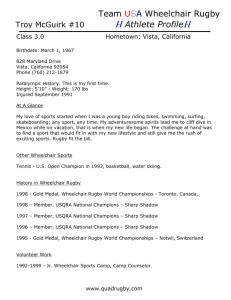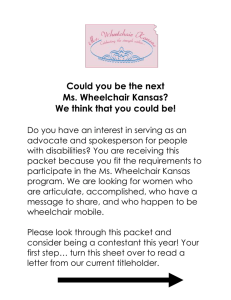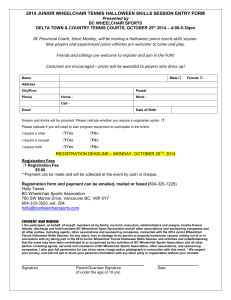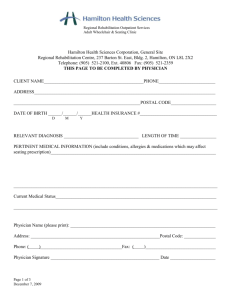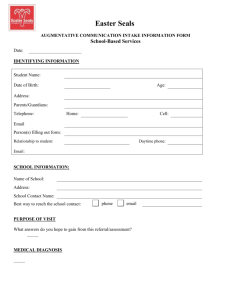The multi-disciplinary team approach in the holistic
advertisement
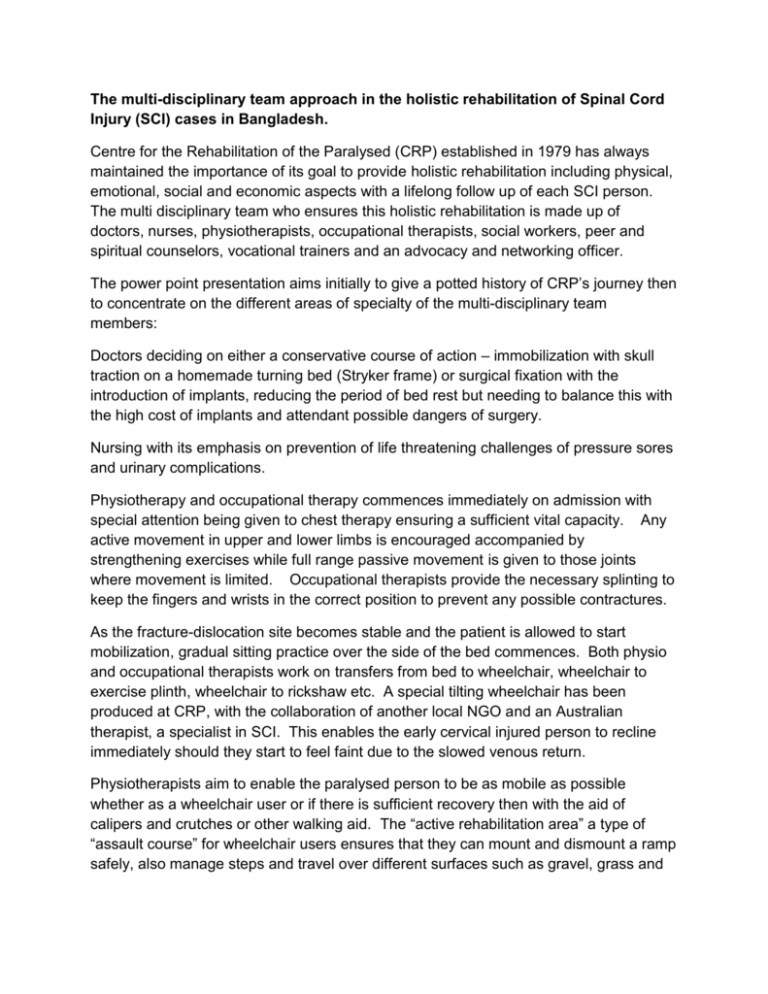
The multi-disciplinary team approach in the holistic rehabilitation of Spinal Cord Injury (SCI) cases in Bangladesh. Centre for the Rehabilitation of the Paralysed (CRP) established in 1979 has always maintained the importance of its goal to provide holistic rehabilitation including physical, emotional, social and economic aspects with a lifelong follow up of each SCI person. The multi disciplinary team who ensures this holistic rehabilitation is made up of doctors, nurses, physiotherapists, occupational therapists, social workers, peer and spiritual counselors, vocational trainers and an advocacy and networking officer. The power point presentation aims initially to give a potted history of CRP’s journey then to concentrate on the different areas of specialty of the multi-disciplinary team members: Doctors deciding on either a conservative course of action – immobilization with skull traction on a homemade turning bed (Stryker frame) or surgical fixation with the introduction of implants, reducing the period of bed rest but needing to balance this with the high cost of implants and attendant possible dangers of surgery. Nursing with its emphasis on prevention of life threatening challenges of pressure sores and urinary complications. Physiotherapy and occupational therapy commences immediately on admission with special attention being given to chest therapy ensuring a sufficient vital capacity. Any active movement in upper and lower limbs is encouraged accompanied by strengthening exercises while full range passive movement is given to those joints where movement is limited. Occupational therapists provide the necessary splinting to keep the fingers and wrists in the correct position to prevent any possible contractures. As the fracture-dislocation site becomes stable and the patient is allowed to start mobilization, gradual sitting practice over the side of the bed commences. Both physio and occupational therapists work on transfers from bed to wheelchair, wheelchair to exercise plinth, wheelchair to rickshaw etc. A special tilting wheelchair has been produced at CRP, with the collaboration of another local NGO and an Australian therapist, a specialist in SCI. This enables the early cervical injured person to recline immediately should they start to feel faint due to the slowed venous return. Physiotherapists aim to enable the paralysed person to be as mobile as possible whether as a wheelchair user or if there is sufficient recovery then with the aid of calipers and crutches or other walking aid. The “active rehabilitation area” a type of “assault course” for wheelchair users ensures that they can mount and dismount a ramp safely, also manage steps and travel over different surfaces such as gravel, grass and mud. A hand operated lift has been installed at CRP to enable the wheelchair user (where no electric powered lift exists) to move up and down a building. The focus of occupational therapy is to enable the paralysed person to regain the ability to engage in the activities of daily living such as feeding, dressing, toileting. Cervical injuries join a regular “hand class” to increase function where such aids as a writing splint may be provided. Activities including gardening, looking after goats and chickens are also encouraged giving the wheelchair user the confidence that he/she can continue on their return home. Games and sports, part of recreational activities along with singing and other performing arts are also encouraged. On completion of time in the ward, the patient progresses to the “half way hostel” where they will spend the last few weeks before discharge to gain as much independence as possible. This includes using the tube well from their wheelchair and getting used to managing without a fan and using a hurricane lamp for light if their home has no electricity. CRP’s aim is that a person should return to the work they did before their accident. However, where many spinal injuries happen as a result of manual laboring jobs such as falling from a height, (most commonly fruit trees) or carrying a heavy head load such as a sack of rice which shifts, then new means of earning a living need to be found. CRP currently runs four different vocational trainings: 1. 2. 3. 4. Tailoring Electronics repair Computer operating Small shop keeping`` As a special adaptation for paraplegic baby taxi drivers, the foot brake has been converted into a hand brake enabling them to drive and continue their work. A team of social workers follow up persons with SCI when they go home to check how fully they have adapted to life in a wheelchair and have integrated into the local community. Quadriplegics are escorted home initially by the “Good Start” project which ensures that transport and a therapist accompany them to overcome the initial requirements of access to the home (often involving the making of a ramp of earth to the front door), possibly widening the front door or bathroom door. When on religious holidays many staff members return home to all areas of Bangladesh, they are required to follow up any previous SCI person within a certain radius of their home. This enables CRP to collect a large amount of information at the same time sensitizing all CRP’s staff, particularly those who are non medical, about the condition of our previous SCI patients. Successful physical rehabilitation leads to emotional adjustment and both then enable the paralysed person to be re-trained and thus able to become the bread winner of the family once again. Social rehabilitation happens to a large extent when members of the community see a wheelchair user able to earn a living and not turn to begging. Together the successfully rehabilitated people in the society have huge challenges to face such as lack of accessibility to buildings, lack of access to educational institutes and places of employment both physically and as a place to study or find employment, because in the mind of many of the general public a person in a wheelchair has overnight become incapable of doing anything, causing them often to be completely ostracized by the society. Keeping this group of previous generation SCI sufferers working together to form a more equitable and fair society, the Spinal Injury Association of Bangladesh (SIAB) has recently been set up. Prevention of accidents is another very important area on which SCI members work along with the support of CRP’s Advocacy and Networking Officer.


